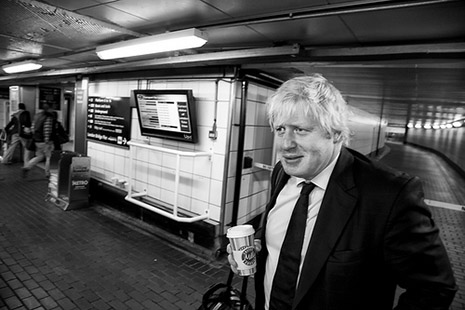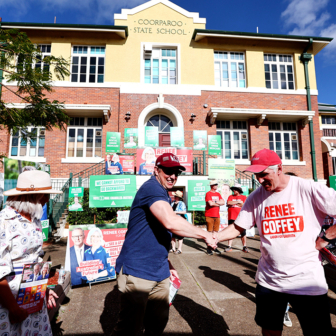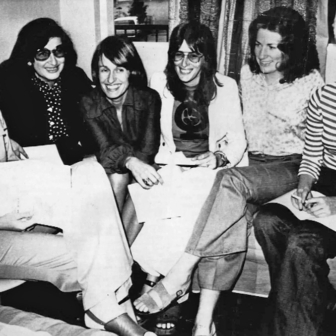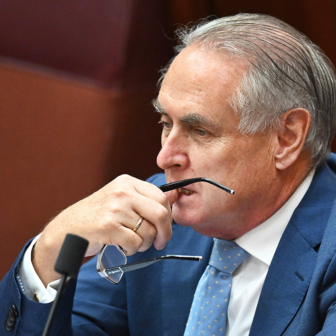THE world’s political calendar in 2012 includes a swathe of leadership transitions in major states, from China to France, Russia to Iran. Against this global canvas, any mayoral election looks a minor event – even when the contest is over the governance of a city of London’s scale and magnetism.
But if the vote for the mayor and the twenty-five members of the London Assembly on 3 May may struggle to find a place in the international media diary, that won’t be the case with the high-summer theatrics that follow: Queen Elizabeth’s diamond jubilee, whose centrepiece is a festive weekend in early June, the Olympic and Paralympic games in July–September, the Cultural Olympiad (“Britain’s biggest ever cultural festival”), and the bicentenary celebration of Charles Dickens, master chronicler of London life and characters. This heady mix of pageantry, sport, tourism, commerce, and culture – exceptional even by the city’s standards – promises to sustain if also to test official London’s claim to be a successful “world city.”
The planning for these “shared national (and global) experiences,” as event managers and brand marketers learned in the 1990s to call them, is well under way. A new Olympics stadium in a historically disadvantaged part of east London is the figurehead of cavernous infrastructural projects – encompassing transport, housing, retail and sporting facilities – whose social effects and legacy are already proving controversial. More discreetly though no less vigorously, government departments and the “royal household” (in effect a department of its own) are working to ensure that the events of jubilee year – exhibitions, beacons, medals, civic honours, the queen’s procession around her realm – are a model of legitimising serenity.
The political context ensures that risk assessment is a priority. The riots and protests that have marked London’s 2011, occurring against a background of great economic pressure on many of its inhabitants’ livelihoods and life chances, as well as the more serious declarative threats from jihadi and Irish republican splinter groups, must be factored in. Every large public gathering, every compelling image, will continue to be underpinned by an intense security and surveillance operation. Behind the scenes, though with visible evidence on almost every street corner, London is on permanent alert.
THIS technicolour season of high stakes makes the election for London’s mayor appear no more than a grey routine of “banal democracy” (to adapt Michael Billig’s term). Yet in its own terms, and even in the context of the spectacles to come, it is far from monochrome.
What makes it so, above all, is the nature of the leading rival candidates, each of whom is a clever, high-profile and controversial politician with a “British” as well as a “London” profile: the incumbent mayor Boris Johnson, a former Conservative MP who won the last election in May 2008, and his predecessor Ken Livingstone, a former Labour MP who served two terms as mayor after the post was created in 2000 and has devoted every waking moment since his defeat to recovering the crown.
“Boris” and “Ken” are such fixtures in Britain’s restless political-celebrity carousel that it has become a trope of media commentary to argue that, contrary to appearances, they have a lot in common – starting, yes, with a recognisable public image crystallised in widespread use of their chosen name alone. This rare accolade, continues the theme, reflects their maverick status within their respective parties, populist touch, vast ambition, shameless propensity for “outrageous” remarks (whose fallout never quite damages them), “colourful” private lives, and an element of ruthless charm that is both compelling and polarising.
Their political and personal trajectories, however, are very different. Boris Johnson, born in 1964, is the son of a former member of the European parliament and World Bank economist and one of four high-achieving siblings (including a current Conservative MP). He entered journalism via Eton and Oxford University, where he was a contemporary of current prime minister David Cameron and chancellor George Osborne. He worked briefly for the Times, as Europe correspondent and assistant editor for the Daily Telegraph, where he continues to write a weekly column, and as editor of the leading conservative weekly magazine the Spectator.
After a failed candidacy in the Labour landslide that brought Tony Blair’s New Labour to power in 1997, he was elected to parliament in 2001 and served in various Conservative Party and shadow-cabinet offices. The late 1990s in Britain had inaugurated the era of the “celebrity politician” who could also (for example) host TV comedy-quiz shows, enter dance competitions and present documentaries, thus offering copious opportunities for those with the right combination of attributes to impress themselves on the public mind – quick wit and performability, clearly, but also the prized capacity to simulate a distinctive persona. In all this Boris Johnson was, is, in the front rank.
So familiar has the act become to the domestic audience that it is easy to forget how comically discordant it once seemed. Boris’s voice (posh baritone), his blond hair (strategically dishevelled), his dress (artfully rumpled), his bicycle (creatively deployed), his humour (a self-parodic melange of Boys’ Own quad-and-toasted-crumpets anachronism, imperial allusion and digressive wordplay) – the combination, when packaged in the figure of a Conservative MP of an unpopular opposition party, seemed out of kilter with the self-consciously thrustful, modernistic aura of the New Labour period.
But this was also a period when comedy was becoming a major cultural industry, and – for a media that loves contrarians and the facade of difference – when “political satire” was filling the gap left by the end of ideology and the infirmity of political opposition. Boris was funny and clever; he stood out; he charmed; he got into scrapes, but even this seemed part of the Just William–style deal; and perhaps most effective of all, in a media-political culture becoming ever less serious, he reflected back to the audience a fashionable unseriousness, the sense that it – political argument, public life – was at heart all a jolly jape.
Thus, when Boris – then shadow higher education minister – announced his candidacy for mayor of London in July 2007, as his old university rival David Cameron was repositioning the Tories for their long march back to national power, the sideways move had an absurd aspect. Boris Johnson, the cod-gravitas comic turn who conjured a throwback image of born-to-rule monoculturalism, as governor of millions of hard-pressed, working-class, thrillingly diverse Londoners? It had to be another joke.
But the media, and certainly his left-wing opponents (very many, and what material he delivered them!), seem to have got Johnson wrong. Behind the charm offensive and the prolific journalism was always a formidable brain and a cold ambition. When the critics began to catch up in 2007–08, the sound of intellectual gears changing – from Boris ridiculous to Boris dangerous – was thunderous.
Still, they were wrong-footed. The left had loved, embraced and championed comedy’s colonisation of politics – most of it still does – but this was a step too far. The big mistake, it seemed, had been to characterise Johnson as above all a media figure (even if in the modern era every successful politician must be that), and to miss the possibility that the deceptively jocular exterior was also a mask. Could Boris even be more serious than the left? It was a question too fearful and disturbing to ask.
Whatever the answer in general, it cannot be positive in respect of the man Boris went on to defeat in May 2008, Ken Livingstone. The two-term mayor (now sixty-six, as opposed to Boris’s forty-seven) has been an inescapable figure in London politics since the moment in 1981, on the morrow of Labour’s victory in the elections to the then Greater London Council, or GLC, he engineered a party-group coup which saw him become council leader. The event both defined Ken Livingstone’s political career and epitomised his political character.
Ken Livingstone was born in 1945, the only child of a Scottish seaman father and dance-troupe mother from south London, whose unfashionable districts – Streatham, Lambeth, Lewisham – would be his heartland in life and early training ground in politics. He left school at seventeen and worked as an animal technician for a cancer-research firm. There, among older left-wing colleagues, he acquired the interest in politics that in 1969 – a time when many of his generation were moving left and outwards – led him to join the Labour Party.
The following year Livingstone enrolled in a teacher-training college, where the student grant that underwrote the three-year course left him plenty of time to pursue his burgeoning political interests. He was elected to Lambeth council in 1971, became vice-chair of the housing committee, and in 1973 won a seat on the GLC as that body’s Conservative administration felt the backlash against Edward Heath’s faltering national government just across the Thames in Westminster.
This was the decade when Livingstone’s political world (a cluster of associates attached to far-left groups and factions inside often moribund local Labour branches) and modus operandi (ceaseless calculating, brokering, positioning and advancing to gain influence and power within the party) were forged. But Livingstone retained an element of solitariness. Though he found natural and long-term allies among Trotskyist front groups such as the Young Chartists (the “public name” of the microcosmic Revolutionary Communist League), and their newspapers such as London Labour Briefing were crucial to his rise, he neither joined these groups nor hid his desire for power within the system.
That quest led him to switch to a safe Labour council seat in working-class Hackney, north of the river, in 1977, and in the same year to win the party nomination for the middle-class Hampstead constituency in the next national election. He lost there in 1979, at the turning-point year of post-1945 British history when exhausted Labour governments under Harold Wilson and James Callaghan were swept out of office by Margaret Thatcher’s promise of freedom and market-led modernisation. Labour descended into civil war, and amid the advance of the left suffered a breakaway to the right in March 1981. Two months later, Labour took back County Hall, headquarters of the GLC, and Ken Livingstone was installed as leader over the body of yet another party rival.
At that instant, “Red Ken” entered national politics and tabloid demonology. A half-decade of epic battles with the Thatcher government and the courts followed, over such issues as the GLC’s efforts to reduce transport fares and its opposition to imposed spending limits (“rate-capping”). In the end, Thatcher’s centralism won the war by abolishing the GLC in 1986. But Ken had already had himself installed in a safe Labour constituency in north-west London, unseating the incumbent MP, and duly entered the House of Commons in 1987 to face his nemesis – and witness her downfall – across the green benches.
But his real enemies, as so often in Ken’s career, were on his own side. His search for party preferment saw him elected briefly to Labour’s national executive, but successive party leaders thwarted his larger ambitions until Tony Blair’s post-1997 reform of London’s governance opened his route to the new post of mayor – albeit as an independent after Blair’s farcical, frantic attempts to avoid this outcome.
When Ken Livingstone was elected mayor of London in 2000 he brought to Norman Foster’s glittering new City Hall the same machine politics that had lifted him to his own and the left’s high tide in 1981. The cynical humour and the nasal south London twang were intact, the instinct for gratuitous insult (usually Nazi-related) even less restrained. There were policy successes in a city floating on the credit boom and a renascent financial sector, notably the “congestion charge” on motor vehicles and the electronic travel pass. By 2004, Ken was Labour’s official mayoral candidate and won by a clear margin. A year on, the Olympics award was another triumph; the next day, visiting Singapore when the 7/7 bombs killed and maimed dozens on London’s transport network, Ken distinguished himself with a heartfelt paean to Londoners’ sense of unity amid tragedy.
But there were scandals, too, in the second term, involving close aides and wasted monies, and controversies galore, not least over Ken’s indulgence of sundry Islamists with distasteful views. More significantly, London’s boom had created new social and demographic dynamics not necessarily to Ken’s advantage. Seeking re-election in 2008, he found himself facing another menacing Tory blond. And again, he lost.
THE Boris–Ken Show, then, has its last hurrah in 2012. True, there will be other candidates in the race – among them Brian Paddick, a former senior policeman, for the Liberal Democrats, and Jenny Jones, a London Assembly member, for the Greens – and under the supplementary-vote system, their second preferences matter. But they pose no threat to the top two.
More relevant than the fate of the minor candidates is the nature of the office that is being fought over, and the extent of its power. In turn, this raises the question of what is the “London” its mayor now governs.
Even a brief answer has to circumvent the kind of trap with which Britain’s hybrid-accretive system of government can ensnare the rational observer. For example, there’s the fact that the “Mayor of London” is quite separate from the “Lord Mayor of the City of London,” the mainly ceremonial figure who heads the governance of the City of London Corporation; the purview of this mayor, whose titular role was established in 1354, is London’s historic core around St Paul’s Cathedral, the Barbican, the Bank of England and the “square mile” financial district (and, among several such peculiarities, the vast public spaces of Hampstead Heath and Epping Forest in north London).
The longstanding capacity of the “City” – as opposed to the “city” – to resist democratic governance is an issue the “occupy” protest, encamped outside St Paul’s since mid-October, stumbled on. Neither Ken nor Boris, each a champion of the benefits the financial sector is held to bring to London entire, has shown any interest in setting foot on this toxic territory.
The mayoralty held consecutively by these two men is a modern one, created by Tony Blair’s government after 1997 as part of the “devolution settlement” that also brought limited self-government to Wales, Scotland and Northern Ireland. (Several English regions were going to be included but the only one asked said “no,” and that was that.) The 1999 reform established a new Greater London Authority, comprising the mayor and the London Assembly, to be based in City Hall. The latter designation again invites confusion with the “City,” whose own entirely unrelated headquarters are in the historic Guildhall, near St Paul’s; perhaps for this reason, City Hall is being renamed “London House” for the duration of Olympics year. (The governance of Britain – or do I mean England – often recalls the humourist George Mikes’s quip that in this country, the purpose of introducing people is to conceal their identity from each other.)
Indeed, the New Labour reform was but the latest of a series of efforts by Westminster to address the “insoluble puzzle of how best to govern London,” which – as Jerry White explains in his fine book London in the 20th Century – was already centuries-old when the Victorians grappled with it.
At the heart of the problem was the legacy of the Corporation’s refusal, during the great spread of London during the sixteenth century, to allow the City’s boundaries to move outwards in step. Another era of immense growth and rapid social change in the nineteenth century consumed dozens of small communities, making them part of a larger whole and thus linked by interest, but – unlike other English cities where administrative unity on the basis of extending historic boundaries was possible – London’s sheer size and the lack of a civic centre left them utterly unconnected.
The puzzle was compounded by the inescapable fact that London was also the sovereign heart of British power – state, monarchical, parliamentary, commercial and imperial. This London lived to rule: it could not allow any upstart “civic” London to govern itself without infringing on its absolutist prerogatives. “The sullen, morose sea of overcrowded humanity that is London has never been encouraged to develop a sense of active community,” Neal Ascherson once wrote, reviewing an early biography of Ken Livingstone. The ensuing tension – between the Whitehall–Westminster complex and the “new” city, between absolute sovereignty and modern democracy – unfolded in the context of the incremental widening of the franchise from 1832 and decades of rapid change in which the worlds of work, settlement, transport, social class and political agency in the city were being transformed.
In practical terms the problem became how to define London’s inner administrative map (and periodically redraw its outer boundaries) and, an even more complicated and political task, how to determine the balance of powers (including over services such as education, health, and housing) between the national government in Whitehall, district boards or local councils, and any London-wide authority.
Like that great nineteenth-century diplomatic conundrum, the Schleswig-Holstein question – to which only three people knew the answer, of whom one died, one went mad and one forgot – the “insoluble puzzle” of London’s governance has stretched the finest minds of Britain’s administrative class. The period from the 1880s, which saw the Labour Party gradually become a pivotal factor in the capital’s political life, saw several major reorganisations: among them in 1889 (the establishment of the directly elected London County Council), 1900 (the creation of prestigious metropolitan borough councils), and 1965 (the replacement of those bodies by the Greater London Council and a new set of borough councils).
In this perspective, the Thatcher–Livingstone feud that ended with the GLC’s abolition in 1986, and the Blair-era introduction of the Greater London Authority in 2000, were but episodes in a long line of reforms that promised no definitive closure. Yet the mayor-assembly model does offer four advantages: democratic legitimacy, accountability, personified leadership and city-wide executive power (over transport, planning, the environment, economic development, culture and London’s police – after that body had been answerable to the national government since 1829). These translate into the mayor’s ability to make a real difference to the lives of Londoners, and the office as a prize worth owning.
THE election campaign will move into full spate early in the new year. A rush of books signals its approach. Boris Johnson’s Johnson’s Life of London: The People Who Made the City that Made the World is a lazy, superficial, episodic, desperately casual canter around some of the city’s famous figures that recalls J.M. Keynes’s attributed remark: “Winston [Churchill] has written a book all about himself and called it The World Crisis.”
Ken Livingstone’s latest autobiography You Can’t Say That – a first apologia, If Voting Changed Anything, They’d Abolish It, was published in 1987 – is one of the most revealing as well as (at 700 pages) the longest of any active politician. In its relentless, score-settling sectarianism and self-justification, it reads far more like a testament than a manifesto.
Together, these tomes reinforce the sense – expressed by the Independent’s literary editor Boyd Tonkin in a magnificently scathing review – that these “playground politicians” with their “vaudevillian frivolity” and “eccentric stand-up turns” illustrate “the puerility of London’s democracy.”
It’s fortunate then that readers and potential voters have a wider range of resources to guide their judgement. Sonia Purnell’s exacting biography, Just Boris: The Irresistible Rise of a Political Celebrity is a prodigiously researched demystification. An updated version of Andrew Gimson’s Boris: The Rise of Boris Johnson (2006) is forthcoming. Andrew Hosken’s Ken: The Ups and Downs of Ken Livingstone (2008), published just before the election of that year, is a rich, fascinating portrait that excavates the cloistered worlds of the 1970s–1980s hard left against the wider landscape of London politics in the period. It more than supplements John Carvel’s invaluable, sympathetic biography, Citizen Ken (1984).
The cumulative effect of reading all these works is to diminish Boris and Ken as political characters, and by extension to diminish London politics itself. Perhaps it is significant that as I write the big emerging campaign issue is transport fares. What else? “All politics is local,” after all.
But this diminishment can also, paradoxically, be an enlargement, if it allows the local dimension of London its reality and integrity alongside the rhetoric of the “world city,” whose associated postmodern jargon (fluid, vibrant, liquid…) captures a partial truth but misses so much. For what is also striking about London – in part a legacy of that stuttering history of governance – is the sheer depth and resilience of local attachments, which are visible in everything from local history societies to school projects, campaigns against library closures to the kindly familiarity of so much everyday street life. These attachments manage to replenish and reform themselves across generations of disjointment: as both refuge from and entry-point to the vast indifference of the city as a whole.
Before monarchy and the Olympics supply the grandeur and gargantuanism in 2012, local concerns and city-wide realities will for a few intense weeks claim their place on London’s political agenda. And even if, appropriately in Charles Dickens’s year, the choice of mayor is between Artful Dodgers, people here will soon shrug it off and continue with what they do best: get on, find a place in the world, and become Londoners. •




